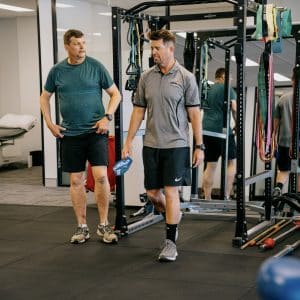Longstanding Groin Pain

The Australian Physiotherapy Association were looking for someone to provide a 90-minute professional development lecture on longstanding groin pain for their local association members… and Ethos Health knew the man for the job. With 15 years’ experience in sport physiotherapy and a special interest in lumbopelvic and lower limb mechanics, Tim Schneider attracted a full house to his presentation earlier this month. His experience in both amateur and elite sport, including Olympic and Paralympic levels put Tim in good stead to deliver a comprehensive lecture. We ask Tim a few questions to get us up to speed on groin pain.
What are the common problems with the groin?
“Groin problems have recently been classified into problems involving the adductor region, as well as hip flexor tendon, inguinal canal region, hip region, and pubic bone region. This is because many areas can refer into the groin. While there are a myriad of conditions in each area, we commonly find more than one region is involved, which makes management more difficult. The most common cases I see are related to the adductor group, particularly tendinopathies as well as issues with the pubic symphysis”.
What are the minor and major injuries of the groin?
“Minor injuries are usually strains and small muscle tears of the adductor muscle. The “major” injuries are more longstanding issues with the soft tissues in the region as well as bone stress injuries to the pelvis. Typically an increasing duration an complexity of symptoms requires a longer recovery time”.
What groin exercises should people focus on?
“There does not seem to be any specific exercises that prevent groin injury, however there is weak evidence that maintaining groin “squeeze” strength, hip and groin mobility and eccentric strength may be useful. The jury is still out on this one”.
What were the key take-away messages from your groin pain lecture?
“Key take home messages were to use good, reproducible reassessment measures and take time in your questioning to guide any tests you use. Then there were a couple specialised tests for the region that could be applied to assist in diagnosis and guide rehabilitation. It is more a case of quality assessment rather than quantity”.
If you have longstanding groin pain and would like advice, please contact us here or book an online appointment






